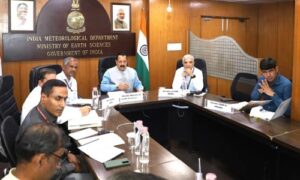A recent high-level meeting of the India Meteorological Department (IMD) has highlighted the expansion of the Doppler Weather Radar (DWR) network and the modernization of meteorological infrastructure as urgent priorities, with Dr Jitendra Singh, the minister of state (independent charge) for science and technology and earth sciences, announcing plans to expand the DWR network from the current 37 operational radars at present to 73 by 2025-26 and to 126 by 2026.
Automatic weather stations
At present, Delhi has 18 automatic weather stations (AWS) in operation. During the review, the minister directed officials to expedite the installation of 50 additional stations, with a long-term goal of scaling up to 100 AWS. This move aims to bring Delhi’s weather forecasting infrastructure on par with global standards. These automated systems are designed to deliver highly specific, accurate and timely forecasts, enhancing the city’s capacity to monitor and respond to changing weather conditions.
Amid the growing frequency of extreme weather events, Dr Singh emphasized the urgent need for real-time, impact-based forecasting that can help minimize damage and save lives. “No weather hazard should go undetected or unpredicted,” he asserted, underscoring the government’s resolve to build a resilient early warning system (EWS) that reaches every corner of the country.
Trebling the number of radars by 2026
The new DWR installations are being planned in high-priority regions such as Bengaluru, Raipur, Ahmedabad, Ranchi, Guwahati and Port Blair, among others.
The minster was briefed on the selection of radar sites and the overall progress of the Mission Mausam launched by PM Narendra Modi, which aims to expand and update India’s weather monitoring infrastructure. The plan includes improved satellite meteorology systems, upgraded numerical prediction models and a more robust radar-based forecasting mechanism.
“The ability to track extreme weather events with greater precision will not only boost disaster management efforts but also directly benefit farmers, fishermen, aviation and various other sectors,” Dr Singh noted during the meeting, which included senior officials such as earth sciences secretary Dr M Ravichandran and IMD director general Dr Mrutyunjay Mohapatra.

The review also took stock of financial allocations and approvals pending for key weather-related infrastructure projects. Dr Singh urged ministries to fast-track decisions to ensure timely implementation. According to the organization, the minister’s review has now set the wheels in motion for a more coordinated and technologically advanced response to India’s meteorological challenges.
In related news, the IMD recently inaugurated a Doppler weather radar (DWR) at Lansdowne in the state of Uttarakhand. Click here to read the full story.



